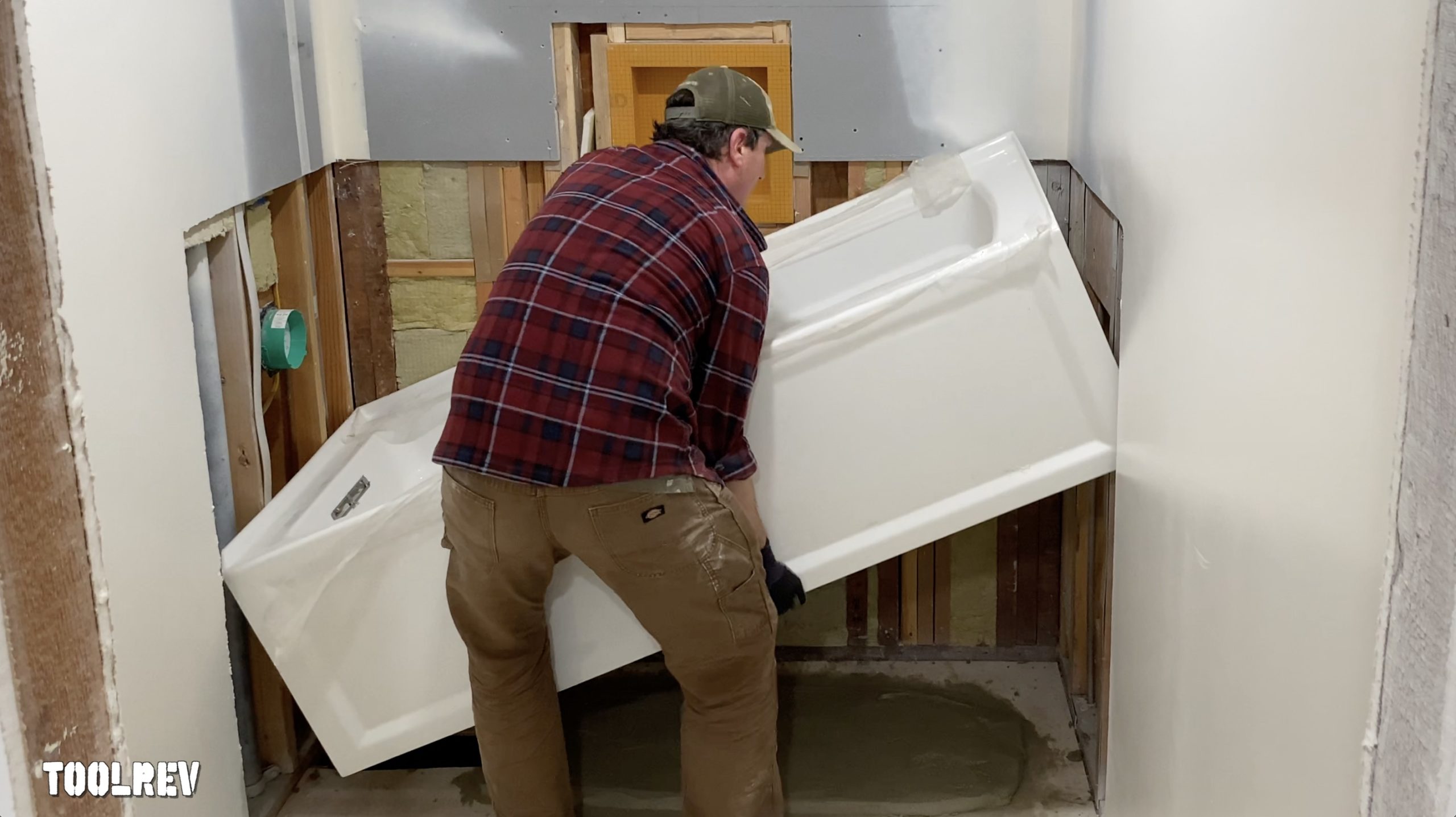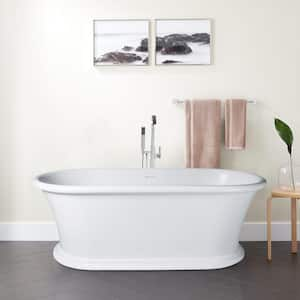Just How to Remove and also Change a Bathtub.
Just How to Remove and also Change a Bathtub.
Blog Article
What're your thoughts on How to Install a Bathtub: Install an Acrylic Tub and Tub Surround?

Installing a bath tub isn't precisely rocket science, but it does call for solid plumbing, carpentry, and also often, tiling skills. Replacing an old bath tub with a new one is also a reasonably challenging project. If the old bathtub is easily accessible, the task can move speedily; if you need to open a wall to eliminate the old tub and place the brand-new bathtub, the job is much harder. In either instance, the job is within a home handyman's abilities, although you will certainly require a helper to vacate the old tub and also embeded in the new one. Make certain you have certified yourself for the task and fit attempting it. As opposed to hiring a service provider to take over a halfway-completed task, it is better to take into consideration employing one before you start. Chances are you may require a professional plumber to make tube connections.
This write-up will assist you mount a new bath tub in your restroom if you have actually already gotten a new tub and also don't require to change the plan of your previous water pipes.
Your tools and also material list need to make up the following:
Removing Old Touches
If you need to replace old taps with new ones as a part of your setup, after that the first thing you should do is disconnect the supply of water. After doing so, activate the faucets to drain pipes any water remaining in the system. The process of eliminating the existing faucets can be rather bothersome as a result of the restricted access that is frequently the situation.
Utilize a container wrench (crowsfoot spanner) or a faucet device to reverse the nut that attaches the supply pipes to the taps. Have a cloth ready for the remaining water that will come from the pipes. When the supply pipes have been eliminated, utilize the exact same device to loosen up the nut that holds the faucets onto the bath/basin. You will certainly require to quit the solitary faucets from transforming throughout this process. When the taps have been eliminated, the holes in the bath/basin will have to be cleaned of any kind of old securing compound.
Prior to proceeding to fit the new faucets, compare the pipeline connections on the old faucets to the new faucets. If the old taps are longer than the brand-new taps, after that a shank adapter is needed for the brand-new taps to fit.
Suitable New Taps
If the tails of the new faucets are plastic, then you will certainly require a plastic connector to stop damages to the thread. One end of the adapter fits on the plastic tail of the faucet as well as the other end gives a link to the existent supply pipelines.
If you need to fit a monobloc, after that you will require lowering couplers, which links the 10mm pipeline of the monobloc to the conventional 15mm supply pipe.
Next off, position the faucet in the installing hole in the bath/basin guaranteeing that the washers remain in location between the tap and also the sink. Safeguard the tap in place with the manufacturer given backnut. Once the tap is firmly in position, the supply pipelines can be linked to the tails of the taps. The taps can either be connected by utilizing corrugated copper piping or with regular faucet ports. The former type ought to be linked to the tap ends first, tightening only by hand. The supply pipelines can later on be attached to the various other end. Tighten up both ends with a spanner after both ends have been linked.
Setting up the Bathtub
Making use of both wood boards under its feet, position the tub in the needed setting. The wooden boards are valuable in uniformly spreading out the weight of the tub over the location of the boards rather than focusing all the weight onto four small points.
The following objective is to make certain that the bath tub is leveled all round. This can be attained by examining the level and also changing the feet on the tub up until the spirit level reads level.
To install faucets, fit all-time low of the outermost versatile tap connector to the appropriate supply pipeline by making a compression sign up with; after that do the exact same for the other tap.
Turn on the water system as well as inspect all joints as well as new pipework for leaks and tighten them if required. Fill the bath tub as well as additionally examine the overflow electrical outlet and the normal outlet for leakages.
Ultimately, deal with the bathroom paneling as explained in the maker's instruction manual. Tiling and also securing around the tub must wait up until the bathtub has been utilized a minimum of once as this will resolve it right into its final setting.
Preparing for the Installation
Firstly, the supporting structure provided with the bath needs to be fitted (if called for) according to the maker's directions. Next off, fit the taps or mixer to the bath tub. When suitable the faucet block, it is very important to ensure that if the tap features a plastic washing machine, it is fitted in between the bathroom as well as the taps. On a plastic bath, it is additionally practical to fit a supporting plate under the taps unit to stop pressure on the tub.
Fit the versatile tap connectors to the bottom of both taps making use of 2 nuts and also olives (often supplied with the bathtub). Fit the plug-hole outlet by smearing mastic filler round the sink electrical outlet hole, and then pass the outlet through the hole in the bathroom. Utilize the nut supplied by the manufacturer to fit the plug-hole. Check out the plug-hole outlet for an inlet on the side for the overflow pipe.
Next off, fit the end of the adaptable overflow pipeline to the overflow electrical outlet. After that, screw the pipe to the overflow face which need to be fitted inside the bath. Make certain you use all of the supplied washing machines.
Attach the trap to the bottom of the waste electrical outlet on the tub by winding the thread of the waste electrical outlet with silicone mastic or PTFE tape, as well as screw on the trap to the electrical outlet. Link the bottom of the overflow tube in a similar manner.The bathroom must currently prepare to be fitted in its final placement.
Tiling Around the Tub
In the area where the bathroom meets the floor tile, it is needed to seal the accompanies a silicone rubber caulking. This is very important as the fitting can relocate enough to split a rigid seal, creating the water to permeate the wall surface between the bathroom and the tiling, causing complications with wetness and also possible leakages to the ceiling below.
You can pick from a variety of coloured sealers to blend in your components and fittings. They are marketed in tubes as well as cartridges, and also are capable of securing voids up to a size of 3mm (1/8 inch). If you have a larger void to fill up, you can fill it with spins of soaked paper or soft rope. Remember to constantly fill the bath tub with water before securing, to allow for the activity experienced when the tub remains in use. The sealer can crack relatively early if you do not think about this movement prior to sealing.
Additionally, ceramic coving or quadrant tiles can be used to edge the bathroom or shower tray. Plastic strips of coving, which are easy to use as well as reduce to size, are additionally easily offered on the marketplace. It is recommended to fit the floor tiles using waterproof or waterproof sticky and also grout.
Bathtub Installation
How Important Is A Bathtub To Your Home?
High-quality baths, showers, and other bathroom updates are necessary when considering a smart investment in your home. It’s a room that you go to every day and one that is constantly being used by guests.The bathroom is one of the top trafficked rooms in a home and also one of the most valuable in terms of home resale.
Install Piping Before Tub
You will be using your existing drain and waste vent system, but pipes required include the hot and cold water supply lines and a pipe leading to a shower head. A mixing valve and shower head are also needed. Air chambers may be required.
Position the Tub
Lower the tub into place so that the continuous flange fits against the wall studs and rests on 1’x4' or 2’x4' supports. Anchor the tub to the enclosure with nails or screws inserted through the flanges into the studs.
NOTE: Remember, bathtubs and shower stalls may require support framing. A bathtub filled with water is extremely heavy, so check building codes and framing support before installing the tub.
Assemble Drain Connections
Assemble the bathtub drain connections by connecting the tub overflow with the tub drain above the trap, not beyond it. The trap will have a compression fitting that screws over the arm of the overflow assembly.
Place a Pipe For the Shower Head
First, locate a brass female threaded winged fitting and attach it to a framing support via a screw or a nail. Then run a pipe up the wall for the shower head. Sweat or solder the other side of the brass fitting to the top of the pipe.
Attaching Hot and Cold Water Lines
Attach your water lines for both hot and cold by sweating these directly into the hot and cold ports of the mixing valve. The mixing valve will be how water enters the tub’s system, not by the pipes themselves.
Install the Spout
Extend a piece of 1/2 inch pipe, or whichever length is specified in the manufacturer’s instructions, for the tub spout. Sweat on a male threaded fitting at the end of the pipe or use a brass nipple of the proper length and a 1/2 inch cap.
NOTE: At this point you should have your rough-in plumbing work inspected before proceeding further.
Check For Leaks
Restore the water pressure and check the drain connection and the supply pipes for any sign of leaking.
estore the Bathroom Wall
Replace the wall with moisture-resistant drywall as a base for your wall covering. Seal the joints between the wall and your new tub with silicone caulk as protection against water seepage.
https://www.berkeys.com/2016/12/02/bathtub-installation-dallas/

I stumbled upon that post on A Step-by-Step Guide to Installing a Bathtub while doing a lookup on the internet. Are you aware of somebody else who is sincerely interested in the niche? Please feel free to promote it. Thanks a bunch for your time. Kindly check our site back soon.
Visit The Following Page Report this page